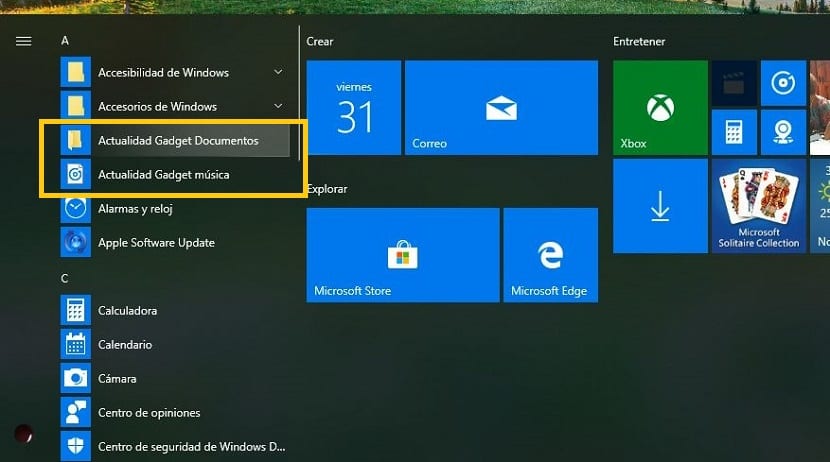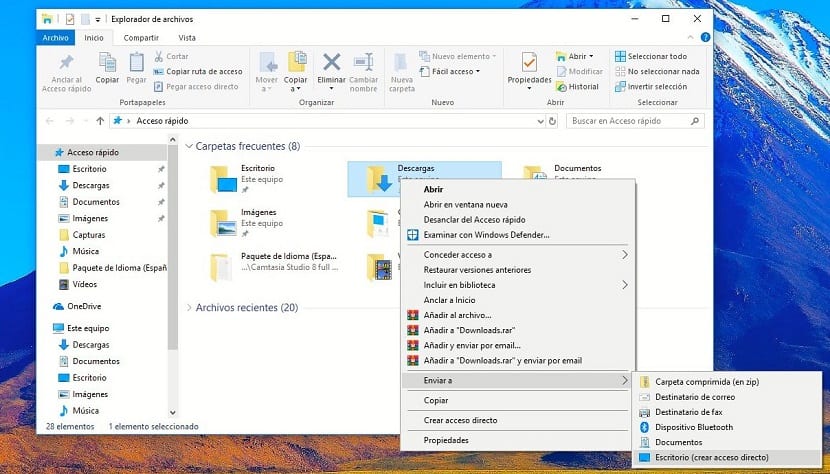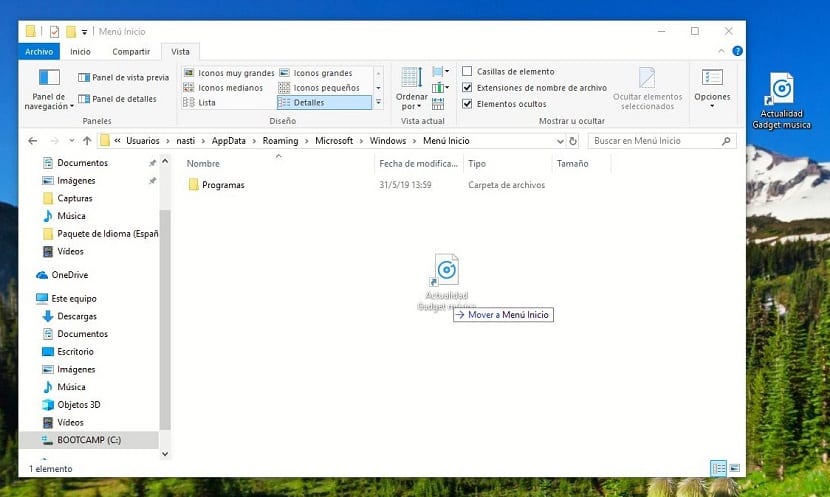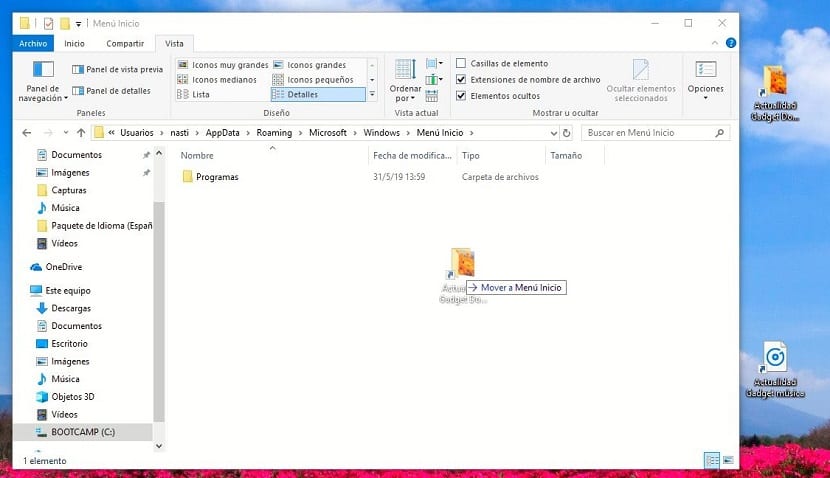
With the launch of Windows 10 almost 3 years ago, the guys at Microsoft almost completely changed the approach you had to Windows until now, offering us a more versatile and wide version, combining the graphical interface of Windows 8 and the functionality of Windows 7.
But, despite sharing some functions, with Windows 10 the methodology used to perform certain tasks has changed, sometimes considerably and it is not so easy to perform tasks that we could do without any problem with previous versions of Windows. One of them is how to add a shortcut to the Windows start menu.
Shortcuts they are our daily bread for many millions of users, especially for those who always want to have the possibility to open a specific document, an application, a specific folder ...
Traditionally, the Windows desktop has always become the final destination for adding shortcuts. The problem is that over time, the ideal functionality that it had in the beginning ends up becoming a chaos, since the number of applications and shortcuts is so high that We take longer to search for it than to open directly the directory where it is located, in the case of a file.
Shortcuts in the Start menu
The solution to this little big problem is found in the start menu or in the taskbar. The problem with the second is that we have limited space when adding shortcuts, so we cannot use it as we usually have done with the desktop, since in the end the taskbar loses its usefulness and becomes a well no background of shortcuts, which It forces us to expand its size on the screen to accommodate everyone.
When we access the Windows start menu, we have at our disposal, not only the applications that we use regularly and that we have recently opened, but we also have access to all the programs that we have installed on our computer, in order to open them quickly.
Windows 10 allows us create a shortcut to our favorite directory or document (or that we use more) just like any other application. If, for example, you always access the same documents at work, you probably want to create different shortcuts for estimates, invoices, communications, circulars, mailing ...
How to create a shortcut in Windows

First, we must know how we can create a shortcut. If you already know how to do it, the method with Windows 10 has not changed, so you can go to the next paragraph.
- To create a shortcut, you must go to the directory or file that we want create the shortcut.
- Next, we place the mouse over the file or directory and we press the right button of the mouse.
- From among all the options that are displayed in the contextual menu, we must select Send> Desktop (shortcut).
- At that moment, a direct access to the file or folder that we want.
This method also valid for applications, although as a general rule, every time we install an application on our computer, it automatically creates a shortcut that we can find in the start menu.
Create shortcut in start menu to file

- First of all, we must create a shortcut to the file we want to open and temporarily place it on the Windows desktop.
- Next, we go to the File Explorer we go to the directory Users> "user name". In this case, if our team has several user accounts, we must select the name of the user of the account where we want to create it.
- Next, we must check the Hidden items box. This box is located within the View tab on the right side of the window. When activating this tab, the directories that we have to access in order to create a direct access will be displayed.
- Once we have activated the Hidden elements box, we will see how a directory called AppData.
- Inside the AppData directory, we follow the path Roaming> Microsoft> Windows> Start Menu> Programs.
- Finally, we just have to drag the shortcut to the file that we have created and temporarily placed on the desktop to this folder.
- If we have performed the task correctly, when clicking on the start menu, the shortcut to the document will be displayed and clicking on it will open automatically.
Create shortcut to a directory in the start menu

- First, we must create a shortcut to the directory we want to open and temporarily place it on the Windows desktop.
- Next, we go to the File Explorer we go to the directory Windows> Users> "user name". In this case, if our team has several user accounts, we must select the name of the user of the account where we want to create it.
- Next, we must check the Hidden items box. This box is located within the View tab on the right side of the window. When activating this tab, the directories that we have to access in order to create a direct access will be displayed.
- Once we have activated the Hidden elements box, we will see how a directory called AppData.
- Inside the AppData directory, we follow the path Roaming> Microsoft> Windows> Start Menu> Programs.
- Finally, we just have to drag the shortcut of the directory that we have created and temporarily placed on the desktop to this folder.
- If we have performed the task correctly, when clicking on the start menu, the shortcut to the folder in question will be displayed and when you click on it, it will open automatically showing us all the content.
Create shortcuts on the taskbar
As I have commented above, creating shortcuts in the taskbar is not the best way or method if we want to have our computer computer and that the taskbar becomes a functioning problem rather than a solution. If we only want to add a couple of shortcuts, we can do it without any problem, since we only have to drag the shortcuts that we have previously created and drag them to the position we want them to occupy on the taskbar.
If we want to eliminate themWe just have to place the mouse over them and press the right mouse button, selecting the Delete option from the context menu.